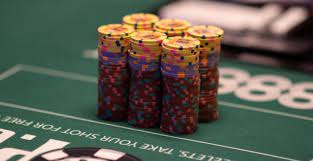Almost every poker player has at one time or another heard the term poker room or online poker room. To many, poker is a game of tournaments and not a game of rooms. But, if you are a tournament player, you need to know the difference between a poker room and a tournament.
Poker Rooms
A poker room is like any other tournament venue; the name of the venue is a misleading statement; it connotes a variety of games in one setting, all at the same time. Some poker rooms are known for their giant multi-table tournaments with lots of players. Other poker rooms have single table tournaments that are more suited to a smaller, relatively slim online poker room.
As far as all-in-all, a typical poker room has at least ten thousand players at a given time. A typical SNG has less than ten players. Many professional poker players make a living from SNGs.
Tournaments
A tournament is a poker game with no limits. In a tournament, the players all start with the same amount of chips and play until they no longer have chips to play with, or until they have all of the chips from the table.
Tournaments that last beyond a few hours usually start with two players, and as the time goes by, the number of players on the table increases. An hour into the tournament, two players are still in the game. At that point, a sixth player is added and the game starts over with the original two players.
The object of a tournament is to win all of the chips. This is an intense game that requires a lot of mental strength and ability to play long hours with little pay. Once again, the ability to play many hours for little pay, and the brain power to play for long periods of time, is a valuable commodity that all poker players should have.
SNGs and Tournaments
When playing in a bola88 tournament, you need to be a very good player with skills that haven’t yet reached their fullest potential. SNGs are made up of many small poker tournaments, usually no more than eight to ten players. Many tournaments are played as “satellite” events, where the winner wins an entry into a bigger tournament.
There are few reasons to enter into a tournament. The first is that the buy-in into the tournament can be very high, creating a cost structure for the tournament to recover its investments. Second, the tournament can last for a long time, creating a profitability problem. And third, the “all-in” action adds drama and excitement to the game.
SNGs and the pros
As the popularity of Texas Hold ’em poker exploded, so did the popularity of eight- and even ten-handed SNGs. And while buy-in prices are now lower, entering into these events is still very profitable. For example, a $10 buy-in into a $1,000 buy-in SNG would pay out $1,000.
And because the SNGs have a lower buy-in – especially the lower price buy-ins – the rewards for finishing in the top 20% of players get higher. Chris Moneymaker didn’t ‘think’ he was going to win the WSOP, but yet by entering a $40 SNG and playing 20 hours a week for a few months, he ended up winning the WSOP.
There isn’t a system for winning the WSOP, but there are a few tips that can be applied. First, you may want to ‘think’ about entering just a few SNGs before you ‘start ’em. Second, you may want to engage in a low-risk, high-value venture such as rebuys or rebuy tournaments. Third, you should be ready to lose the money you have won.
In the WPT, the top players earn about $10,000 to $20,000 per year. If you want to be one of them, you’ll need to enter a $1,000 buy-in event before you ‘start ’em. Tournaments with a low buy-in can be risky; you may not be ready to lose big pots when you have a lot of chips, and you’ll be able to make mistakes. And, if you want to win a big tournament, you’ll need a lot of chips. So start at the lowest level possible.
Before you ‘start’ any tournament, you should know the rules for each event. You should also have a general understanding of how the structure of the event works, and how the blinds and antes are set. The first rule of thumb is to play aggressively when you have a strong hand. Consider a continuation bet especially if your hand is a known better.
Always start with a low buy-in so you can afford to lose it all.
